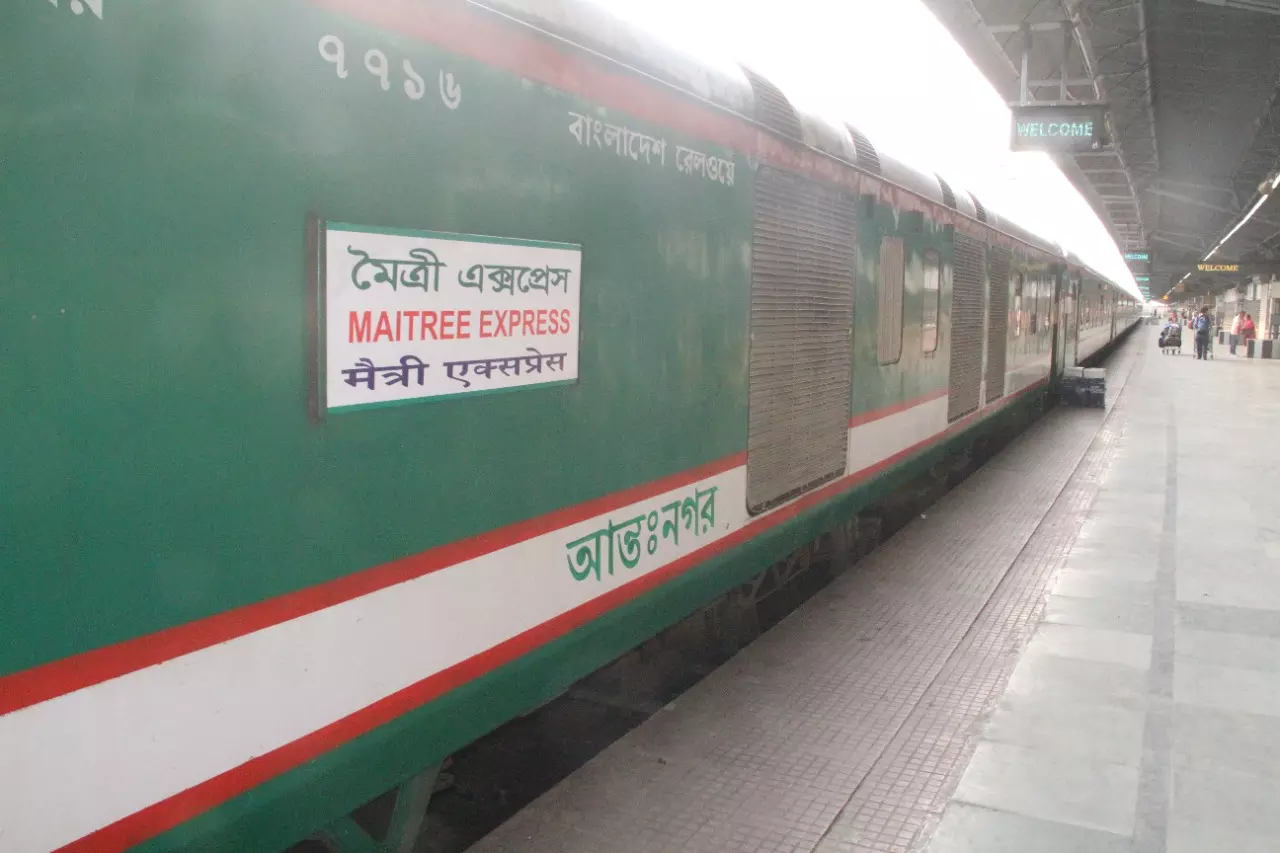Aakar Patel | India visa ops’ disruption in Bangladesh is hurting us too

India and Bangladesh share deep-rooted bonds of history, language, culture, and multitude of other commonalities. The outstanding nature of bilateral ties is reflected in an all-encompassing partnership based on sovereignty, equality, trust, and understanding. This partnership has evolved as a model for bilateral relations for the entire region and beyond.”
These are the words of India’s external affairs ministry, which was published in its “brief on India-Bangladesh bilateral relations” of 2024.
Currently, there are three railway trains operating between the two countries — (1) Maitri Express (since 2008, connecting Kolkata and Dhaka); (2) Bandhan Express (since 2017, connecting Kolkata and Khulna); and (3) Mitali Express (since June 2022, between New Jalpaiguri and Dhaka).
Additionally, five bus services routes are operational between India and Bangladesh -- connecting Kolkata, Agartala and Guwahati to Dhaka and further up to Khulna. I took the train to Khulna just a few weeks before the Covid-19 pandemic broke out in 2020 and it will surprise Indians to know how many from across the border use it. This train link was resumed in 2017 after having been closed during the 1965 war.
Bangladesh is India’s biggest trading partner in South Asia and India is the second biggest trade partner of Bangladesh in Asia. Bangladesh exported $2 billion of goods to India in FY 2023-24. In FY 2023-24, the total bilateral trade has been reported as $14 billion, meaning that it is heavily skewed in favour of India.
The external affairs ministry’s note says that India issues medical attendant visas to three Bangladeshis to accompany one medical patient into India — a highly liberalised process uniquely extended to Bangladesh. Our visa operations in Bangladesh constitute the largest visa operation that India conducts worldwide, in terms of application centres present across the host country, the volume of applications received per day as well as the number of visas processed and issued.
This has taken a major hit after Sheikh Hasina’s government was overthrown and India reduced its diplomatic presence in Bangladesh. The damage from our reduced presence has accrued to India because the liberal visa process has been highly favourable to Indian business, especially medical tourism. Indeed, half of all medical tourists arriving in India, some 325,000 out of a total of 635,000 annually, are Bangladeshis.
On the other hand, what Pakistanis must go through to visit India can be explained through the visit made from Lahore by friends of mine to Bengaluru in October 2024. One of them walked across through the Attari-Wagah border and flew to Bengaluru from Amritsar on a Thursday night. The next day, he was at the police station to register his entry into Bengaluru. Pakistanis are given city-specific visas that require them to register at each city’s police stations on entry and exit. The day after that, Saturday, he was again at the police station to record his exit, because the station would be closed on Sunday. He left on Sunday for Delhi and on Monday had to report to the police station there. And so on.
I can empathise with my friend because on some of my visits to Pakistan I have also been given identical “reporting” visas. They are meant to discourage people from coming and this is the lot of those who actually secure a visa; most people are denied. This harshness is reciprocal and both sides mirror what the other country does.
Some 25 lakh Bangladeshi tourists come to India annually compared to about 40,000 Pakistanis. In the first half of 2024, according to the ministry of tourism’s data, Bangladeshis were the number one tourist arrivals into India, above the United States, Britain and Canada, which is remarkable given the number of Indian origin people in these three countries. The number of Bangladeshi tourists was about five lakhs a year till 2010 and in each of the three years before that it was around that number. Then it doubled to around 10 lakhs in 2014 and it has since doubled again in the Narendra Modi decade.
The number of Bangladeshis coming over is remarkable also for the fact that in the same period the rhetoric in India from the political party in office has been one of contempt towards Bangladeshis. Even in the election campaign that just ended, the message to voters from the BJP leadership was peppered with the threat of “outsiders”. Given this constant scare-mongering, most Indians will likely think that the visa regime with Bangladesh is the same as we have with Pakistan. It is not and a look at the actual numbers shows that the BJP has continued with the wise actions of previous governments in building relations with Bangladesh through allowing more free movement of their people. This is, to repeat, beneficial to India as the numbers show.
Of course, movement between the two countries is not as free as it is with another neighbour, about whom our foreign ministry’s note reads: “India and Nepal share close and friendly relations characterised by age-old historical and cultural linkages, open border and deep-rooted people-to-people contacts”.
The language is similar to that describing our relations with Bangladesh, but there is one difference. That is of course the fact that we have an open border with Nepal and no visa and not even a passport is required for nationals on either side to visit or find employment in the other country.
Next Story
